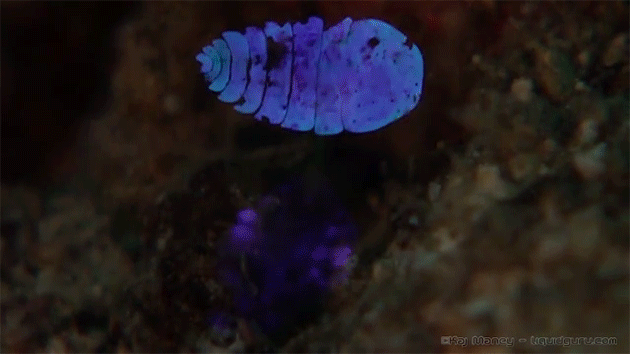Sea sapphires live by a "now you see 'em, now you don't" mantra. But when they do make an appearance, they're the crown jewel of the undersea world.
The iridescent creatures -- scientifically known as Sapphirina copepods -- can appear in hues ranging from fluorescent blue, like the little guy above, to bright gold. Researchers have long wondered how the copepods pull off the Houdini act, in which they go from bright, leaf-shaped swimmers one moment before a quick turn renders them nearly invisible.
But members of Israel's Weizmann Institute of Science have finally discovered the secret: "alternating layers of hexagonal-shaped guanine crystals and cytoplasm," according to a study they published last month in the Journal of the American Chemical Society.
In layman's terms, this means the copepods have honeycomb-shaped layers of fluid-filled "crystals," which also contribute to the sheen seen on fish scales. When the sea sapphires move, the angle of light produces a colorful reflective effect, with different-sized crystal layers in different species resulting in a variety of hues.
As New Scientist notes, the sea sapphire in the video above seems to disappear when it tilts to an angle of 45 degrees away from the sun. This causes the reflected light to "slip into the ultraviolet spectrum," which is invisible to humans.
The researchers who conducted the study did not respond to a request for comment.
Another surprising find? Only males display the unusual effect -- female sea sapphires are exclusively translucent, meaning they're rarely, if ever, visible to the human eye.
“An intriguing question that still remains is whether the differences in color are genetic and each male is born with a defined color, or whether they can control the reflected color,” Lia Addadi, a co-author of the study, told New Scientist.
Wired UK notes that the application of the discovery could aid biomimicry research, including the pursuit of the elusive invisibility cloak.

